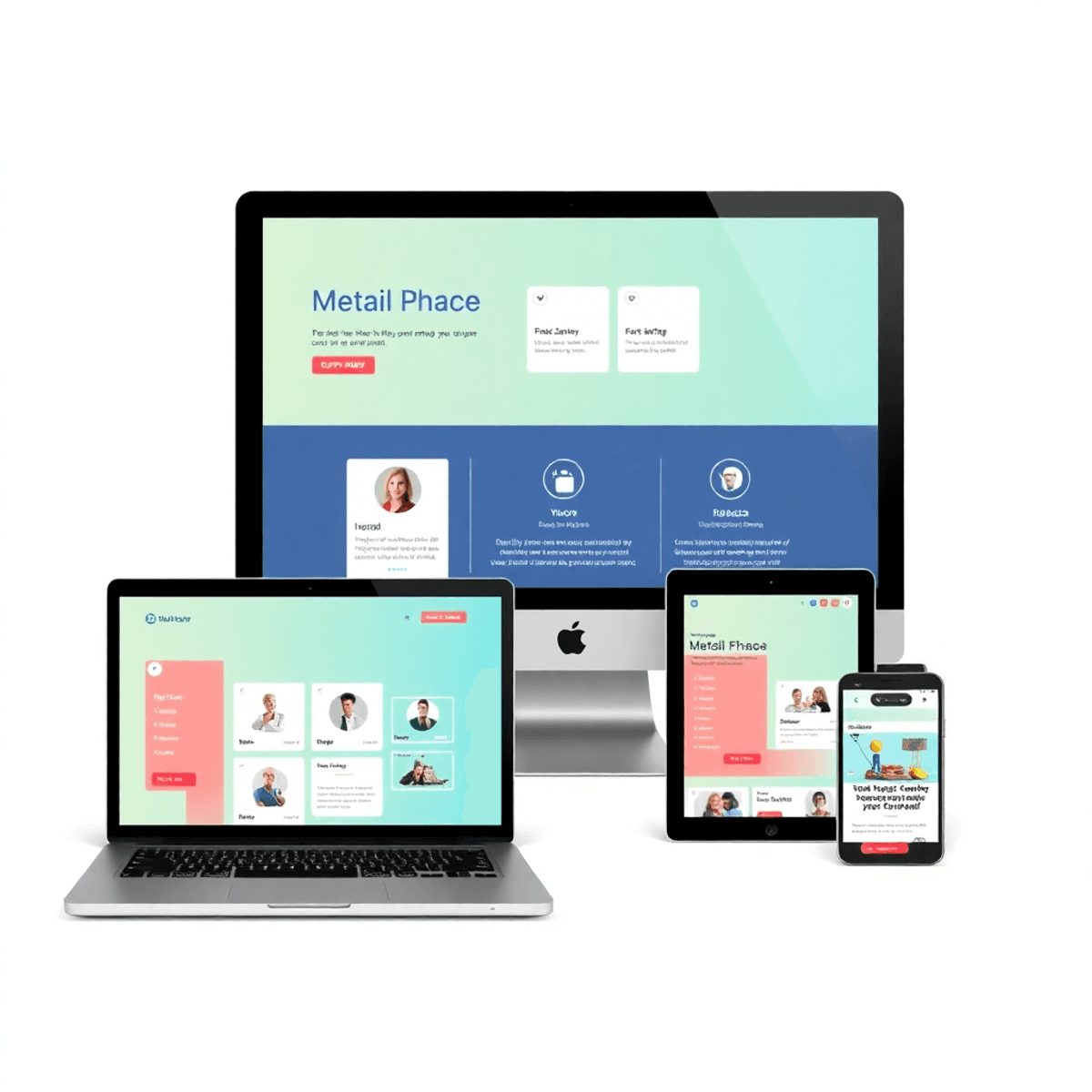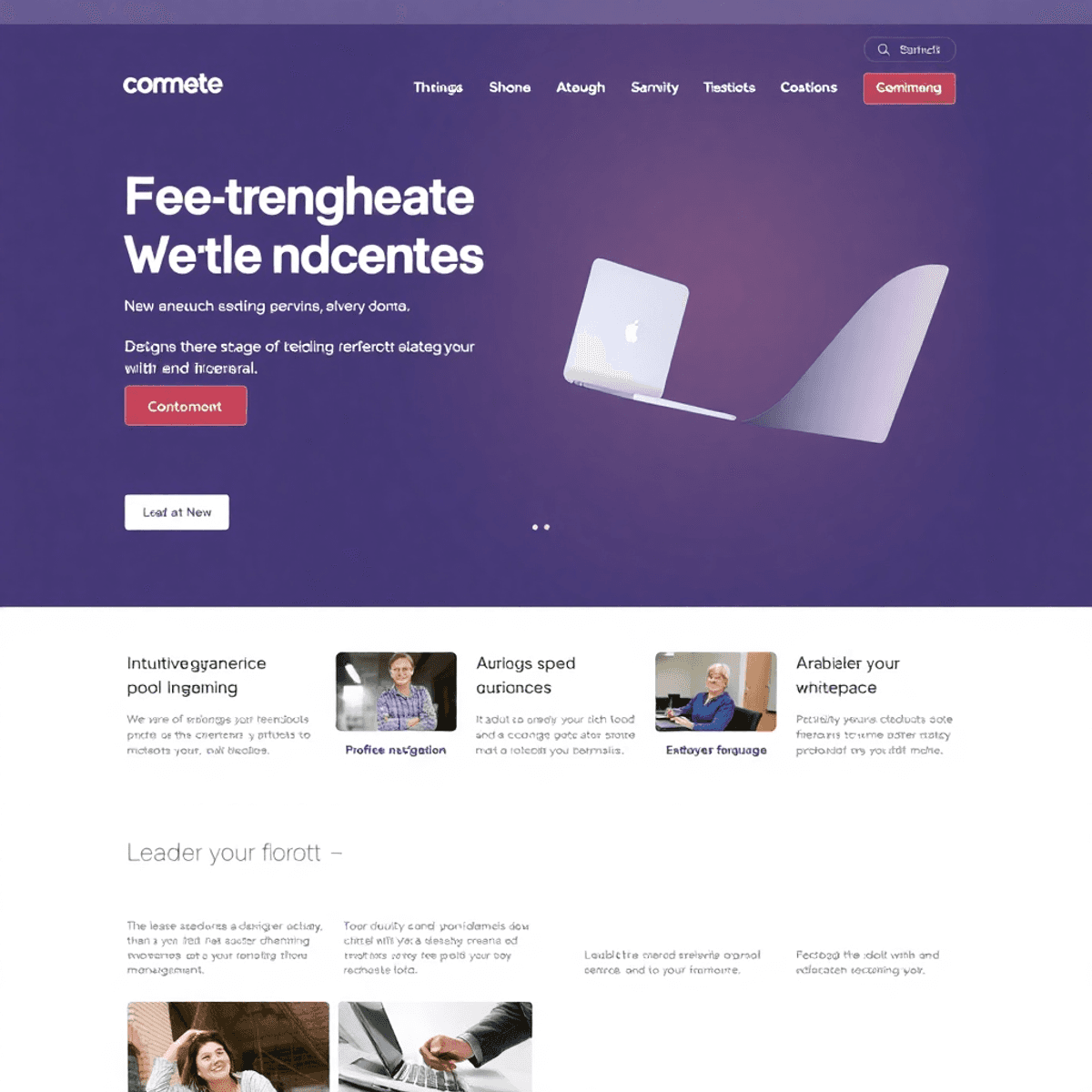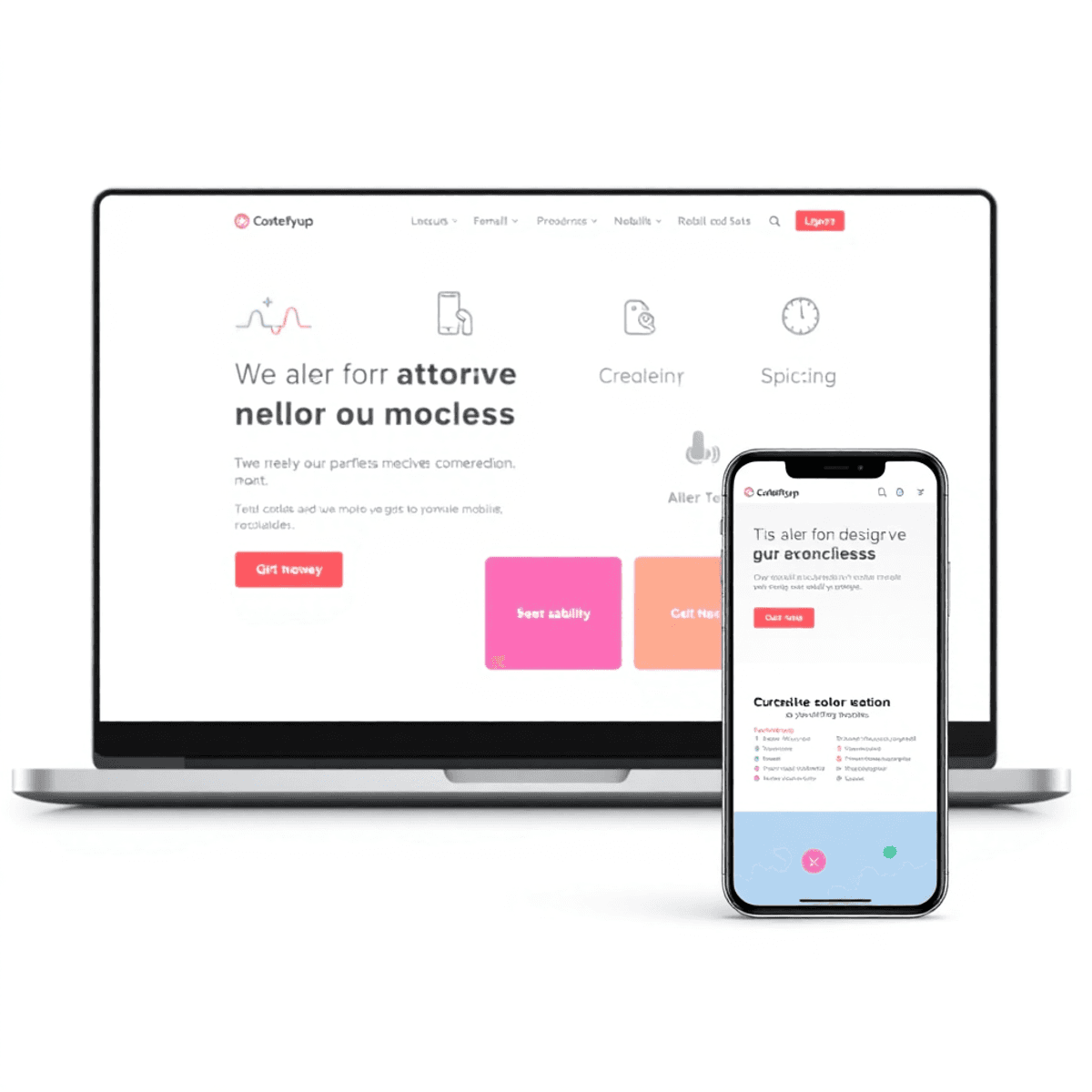Website design isn’t just about making a site look good. It’s about creating an experience that engages users and encourages them to take action. While many factors play into good web design, the most important aspect is
usability.
If your website isn’t easy to navigate or doesn’t work smoothly on different devices, visitors will leave. In fact, 88% of online users are less likely to return to a site after a bad experience. Ensuring your website is user-friendly should be your top priority.
RELATED: 5 Proven Strategies for Crafting the Best Sports Website Design
What is the Most Important Thing in Website Design

Usability is the most important aspect of web design. A website must be easy to navigate, fast to load, and responsive on all devices. If users struggle to find what they need, they’ll leave. Prioritize a user-friendly experience to keep visitors engaged, reduce bounce rates, and improve conversion rates.
The 5 Most Important Things for a Website
- User Experience (UX): This is at the core of good web design. A site should be intuitive. Visitors should be able to find what they need quickly without confusion. This means clear navigation, fast loading times, and mobile compatibility.
- Responsive Design: With over half of web traffic coming from mobile devices, it’s crucial that your website adapts to all screen sizes. If it doesn’t, you risk alienating a large portion of your audience.
- Content: A website without clear, relevant content fails to communicate its purpose. Well-written text, clear headings, and strategically placed calls-to-action (CTAs) help visitors understand your offering.
- Aesthetic Appeal: While usability is key, a clean, modern design will make a strong first impression. Avoid cluttered layouts and stick to a consistent color scheme and font choices.
- SEO: No matter how great your website looks or functions, it won’t help if no one sees it. An optimized website is crucial for ranking higher on search engines, driving more traffic to your site.
RELATED:
the ultimate Guide to the best sports website design 2025
7 Web Design Elements You Must Get Right

- Navigation: Easy-to-understand navigation keeps users engaged. If they struggle to find what they’re looking for, they’ll leave quickly. Make sure it’s intuitive and well-organized.
- Visual Hierarchy: Prioritize elements so users can immediately identify the most important information. This includes the use of size, color, and placement to guide users’ attention.
- Typography: Choose fonts that are legible and match your brand. Avoid using too many different fonts, as this can create a chaotic appearance.
- Images: High-quality, relevant images enhance user engagement. Be sure to compress images to reduce load times while maintaining quality.
- Whitespace: This gives content room to breathe and helps visitors focus on key areas. Don’t overcrowd your design.
- CTAs: Calls to action should be clear and compelling. Make sure they stand out and encourage users to take the next step.
- Load Speed: A slow-loading website can drive users away. Optimize your site’s speed to avoid frustrating potential visitors.
RELATED:
which item is most important for a successful website design
10 Principles of Good Website Design
 Consistency:
Consistency: Keep the design elements consistent across your site to create a sense of cohesion.
Simplicity: Avoid overwhelming users with too many elements or choices. A simple, straightforward design is more effective.
Accessibility: Ensure your website is accessible to all users, including those with disabilities. This includes providing text descriptions for images and ensuring compatibility with screen readers.
Mobile Optimization: Design for mobile-first. More people access websites through smartphones than desktops.
Visual Appeal: A visually attractive website creates a positive user experience, helping users stay longer and engage more.
Clear Purpose: Your website should clearly communicate its goal or service within seconds of landing.
Effective Content: Use concise, relevant content that speaks directly to your audience’s needs.
Engagement: Incorporate elements that encourage user interaction, such as comment sections or product reviews.
Speed: A fast site is crucial for retaining visitors. Optimize elements to load quickly.
Scalability: Design your website to scale with your growing business, whether it’s adding new pages or features.
5 Basic Elements of Web Design
- Layout: The structure of the website determines how information is organized and presented. A clean layout makes it easier for users to navigate.
- Typography: Good typography ensures readability and reinforces your brand’s identity.
- Color Scheme: The right color scheme helps set the mood and tone of your site. Make sure the colors align with your brand’s personality.
- Images and Graphics: Use images to support your content, not overwhelm it. They should complement your message and enhance the overall user experience.
- Content: Content is key. Your message needs to be clear, engaging, and direct.
8 Qualities of a Good Website
- Clear Messaging: A good website communicates its value proposition clearly from the get-go.
- User-Centered Design: It’s focused on providing a seamless experience for users. Every design choice should consider the user’s journey.
- Easy Navigation: Users should always know where they are and how to get to where they want to go.
- Responsive and Mobile-Friendly: Your website needs to look and function well across all devices.
- Security: A secure site builds trust with users. SSL certificates, secure payment gateways, and regular updates are vital.
- Fast Load Time: Websites should load in less than 3 seconds to reduce bounce rates.
- SEO-Friendly: Proper SEO practices increase visibility, which is key for attracting traffic.
- Fresh Content: Regularly updated content keeps your website relevant and engaging.
Call to Action
Looking to create a user-friendly, high-converting website? Contact us for a free consultation on your website design needs.
FAQ
What are the 5 most important things for a website?
The five most important elements for a website are usability, mobile responsiveness, clear content, fast load times, and SEO optimization.
What are the 7 web design elements?
The 7 essential web design elements are navigation, visual hierarchy, typography, images, whitespace, CTAs, and load speed.
What are the 10 principles of good website design?
The 10 principles include consistency, simplicity, accessibility, mobile optimization, visual appeal, clear purpose, effective content, engagement, speed, and scalability.
What are the 5 basic elements of web design?
These elements are layout, typography, color scheme, images/graphics, and content.
What are the 8 qualities of a good website?
A good website should have clear messaging, user-centered design, easy navigation, responsiveness, security, fast load times, SEO-friendly features, and fresh content.
 Usability is the most important aspect of web design. A website must be easy to navigate, fast to load, and responsive on all devices. If users struggle to find what they need, they’ll leave. Prioritize a user-friendly experience to keep visitors engaged, reduce bounce rates, and improve conversion rates.
Usability is the most important aspect of web design. A website must be easy to navigate, fast to load, and responsive on all devices. If users struggle to find what they need, they’ll leave. Prioritize a user-friendly experience to keep visitors engaged, reduce bounce rates, and improve conversion rates.
 Consistency: Keep the design elements consistent across your site to create a sense of cohesion.
Simplicity: Avoid overwhelming users with too many elements or choices. A simple, straightforward design is more effective.
Accessibility: Ensure your website is accessible to all users, including those with disabilities. This includes providing text descriptions for images and ensuring compatibility with screen readers.
Mobile Optimization: Design for mobile-first. More people access websites through smartphones than desktops.
Visual Appeal: A visually attractive website creates a positive user experience, helping users stay longer and engage more.
Clear Purpose: Your website should clearly communicate its goal or service within seconds of landing.
Effective Content: Use concise, relevant content that speaks directly to your audience’s needs.
Engagement: Incorporate elements that encourage user interaction, such as comment sections or product reviews.
Speed: A fast site is crucial for retaining visitors. Optimize elements to load quickly.
Scalability: Design your website to scale with your growing business, whether it’s adding new pages or features.
Consistency: Keep the design elements consistent across your site to create a sense of cohesion.
Simplicity: Avoid overwhelming users with too many elements or choices. A simple, straightforward design is more effective.
Accessibility: Ensure your website is accessible to all users, including those with disabilities. This includes providing text descriptions for images and ensuring compatibility with screen readers.
Mobile Optimization: Design for mobile-first. More people access websites through smartphones than desktops.
Visual Appeal: A visually attractive website creates a positive user experience, helping users stay longer and engage more.
Clear Purpose: Your website should clearly communicate its goal or service within seconds of landing.
Effective Content: Use concise, relevant content that speaks directly to your audience’s needs.
Engagement: Incorporate elements that encourage user interaction, such as comment sections or product reviews.
Speed: A fast site is crucial for retaining visitors. Optimize elements to load quickly.
Scalability: Design your website to scale with your growing business, whether it’s adding new pages or features.


